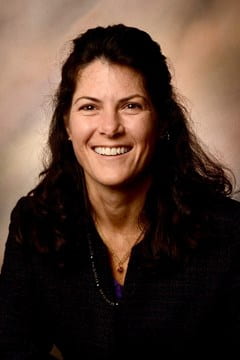 Mary Savin, Professor of Microbial Ecology in the Crop, Soil and Environmental Sciences department, led a discussion on “Taking Risks in Teaching to Improve Learning” at the September 2019 Wally Cordes Chair Discussion.
Mary Savin, Professor of Microbial Ecology in the Crop, Soil and Environmental Sciences department, led a discussion on “Taking Risks in Teaching to Improve Learning” at the September 2019 Wally Cordes Chair Discussion.
Savin discussed the often lack of teaching preparation and practice that instructors are faced with in higher ed. Advice is often of the form “learn the content, you will get a job and you will pick up the teaching because you will have to!”
But teaching is inherently risky and it is hard. Ultimately, it is about trying new things. Savin discussed several new strategies that she has tried in her courses to help engage students and take on new risks. She mentioned that she
- Let students decide the point values on assignments and help create the syllabus
- This resulted in more participation than she expected
- The points were not allocated how she would have allocated them but she emphasized that this was part of risk-taking
- Let students be more creative in their assignments/projects
- This is a much bigger risk
- She allowed them to design their own semester-long projects
- While it was not as neat and tidy as a rigid or structured course, she was able to see higher levels of learning, growth mindset in students, and more interactions among students
While these risks were relatively successful and Savin plans to adjust them in the future, she asked participants to reflect on risks they took that failed, that were successful, and that students were resistant to trying.
Participants noted successes with some of the following teaching strategies
- Video reflections/essays
- 10-12 minute videos
- cannot read from notes or script
- topics were not “right or wrong” but interpretive
- shows critical thinking and reflection
- can use VoiceThread or Kaltura to create and submit to Blackboard
- Lecture Recordings for self-evaluation
- instructors can record their lectures using Echo360 and listen to themselves
- this allows for instructors to assess how much time they spend on topics, unsuccessful lessons, or great successes
- Record student presentations and have students do self-critiques
- allows students to see where they need to improve
- allows students to reflect on their work
- 5-minute video of students teaching a concept
- this assignment requires students to record themselves teaching a concept, technique, or activity
- teaching others how to do something is often different than an informative presentation
- short time frame forces succinct information
- use video games to explain concepts
- if there are video games that explain or explore course concepts this can introduce competition or deeper learning
Overall Savin’s advice is to start small! Small changes and adjustments are often easier and less overwhelming than large overhauls of materials and courses. She also noted that not all risks work for all individuals. It is okay to fail! Ultimately she suggests that instructors consider alternative techniques to enhance student learning, that planning ahead is important, and again, start small!
If you would like more information on how to incorporate technology into your courses, reach out to us at tips@uark.edu.
For more information on Mary Savin’s teaching methods, you can email her at msavin@uark.edu.
This content was developed from a presentation by Mary Savin which was sponsored by The Wally Cordes Teaching and Faculty Support Center (TFSC) at the University of Arkansas.